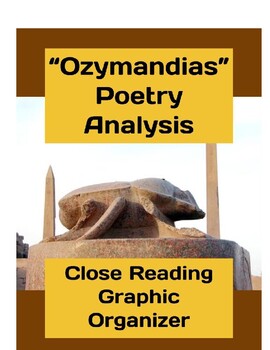
There are yet more layers of meaning here that elevate this into one of the greatest poems. Success, fame, power, money, health, and prosperity can only last so long before fading into “lone and level sands.” Advertisements But, beyond that there is a perennial lesson about the inescapable and destructive forces of time, history, and nature. The image of a dictator-like king whose kingdom is no more creates a palpable irony.

Yet, all that’s left of the statue are his legs, which tell us it was huge and impressive the shattered head and snarling face, which tell us how tyrannical he was and his inscribed quote hailing the magnificent structures that he built and that have been reduced to dust, which tells us they might not have been quite as magnificent as Ozymandias imagined. This king is still regarded as the greatest and most powerful Egyptian pharaoh. In this winding story within a poem, Shelley paints for us the image of the ruins of a statue of ancient Egyptian king Ozymandias, who is today commonly known as Ramesses II. The theme in Shelley’s poem seems to be that nothing lasts forever, even the most powerful have to fade and decay, and with time their greatness and power, too, will be forgotten. Shelley ends his poem with a sense of how nature is eternal, which he portrays in the vastness of the desert’s sands. The traveller says the “sneer and the cold command” on the statue’s face is the only remnant of this ancient civilization’s ruler.

The crumbled statue represents a cruel ruler’s dream of power and its lasting place alongside eternity, which has been reduced to a traveller’s curiosity and further emphasized in the ironic words on the pedestal. The imagery presented by Shelley is that of a fallen king that once ruled with absolute authority.


 0 kommentar(er)
0 kommentar(er)
